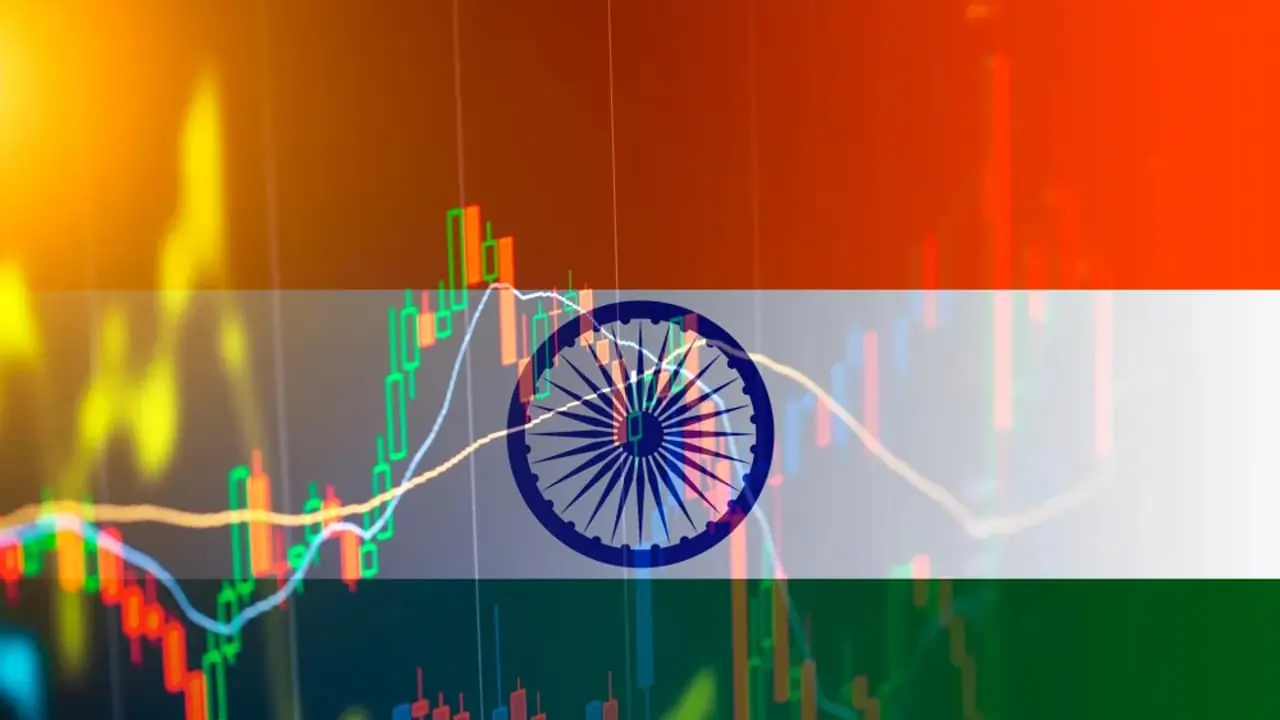In a monumental development for the Indian economy, S&P Global Ratings has officially upgraded India’s long-term unsolicited sovereign credit ratings to “BBB” from “BBB-“. This significant revision, which also saw the short-term ratings rise to ‘A-2’ from ‘A-3’, reflects a powerful endorsement of India’s sustained economic resilience and prudent fiscal management. The outlook on the long-term rating is stable, signaling a high degree of confidence in the country’s economic path over the coming years.
Build the future you deserve. Get started with our top-tier Online courses: ACCA, HESI A2, ATI TEAS 7, HESI EXIT, NCLEX-RN, NCLEX-PN, and Financial Literacy. Let Serrari Ed guide your path to success. Enroll today.
The upgrade holds particular weight given that it is the first such move by S&P Global for India in 18 years, following the last upgrade in January 2007. The gap between the two decisions underscores the profound economic and policy shifts that have taken place. The move also makes S&P Global the first of the major global rating agencies to lift India’s rating from the lowest investment grade of ‘BBB-‘. This article will delve into the intricacies of this decision, exploring the factors that led to it, the significance of the “BBB” rating, and its far-reaching implications for India’s financial markets and future economic growth.
Understanding Sovereign Credit Ratings
To appreciate the gravity of S&P’s decision, it is essential to first understand what a sovereign credit rating is. A sovereign credit rating is an independent assessment of a country’s creditworthiness. It measures the risk of a government defaulting on its debt obligations. These ratings are crucial because they influence a government’s cost of borrowing in international capital markets. A higher rating indicates a lower risk of default, allowing a country to borrow at a lower interest rate. Conversely, a lower rating signals higher risk, leading to higher borrowing costs.
The three main international credit rating agencies are S&P Global Ratings, Moody’s Investors Service, and Fitch Ratings. These agencies use their own proprietary scales, but they are generally comparable. S&P’s scale, for example, ranges from ‘AAA’ (the highest quality) down to ‘D’ (default). The “BBB” rating, which India now holds, falls firmly within the investment-grade category, signifying a low to moderate risk of default. It’s a stamp of approval that assures global investors of the stability and reliability of India’s economy.
The term “unsolicited” is also significant. It means that the rating was assigned by S&P based on its own analysis without being requested or paid for by the Indian government. This further reinforces the independence and credibility of the assessment.
The Key Drivers of the Upgrade
S&P Global’s official statement and accompanying analysis point to several interconnected factors that culminated in the rating upgrade. These factors paint a picture of an economy that is not only resilient but also strategically positioning itself for sustainable long-term growth.
1. Buoyant Economic Growth
S&P noted that India remains among the world’s best-performing economies. The agency highlighted the country’s remarkable comeback from the COVID-19 pandemic, with real GDP growth averaging an impressive 8.8% from fiscal year 2022 to fiscal year 2024. This was the highest growth rate in the Asia-Pacific region during that period. This strong growth is a testament to the nation’s robust domestic demand, a diverse and youthful population, and a strategic focus on key sectors. The government’s continued push for infrastructure development and manufacturing through initiatives like the Production Linked Incentive (PLI) scheme has provided a powerful stimulus to various industries, contributing to this sustained economic dynamism.
2. Enhanced Monetary Policy and Inflation Control
A critical factor in the upgrade was S&P’s recognition of an enhanced monetary policy environment that effectively anchors inflationary expectations. The Reserve Bank of India (RBI) has demonstrated its commitment to price stability, a key metric for rating agencies. An environment of controlled inflation creates predictability for businesses and consumers, encouraging long-term investment and consumption. This stability is particularly important for foreign investors, who are less likely to invest in a country where inflation erodes the value of their returns. The RBI’s consistent policy actions have built a strong track record, providing confidence that the central bank can navigate future economic shocks without sacrificing its primary objective of price stability.
3. Sustained Fiscal Consolidation
For years, one of the primary concerns of rating agencies has been India’s relatively high fiscal deficit and government debt-to-GDP ratio. The upgrade reflects S&P’s belief that India is now prioritizing fiscal consolidation, demonstrating a political commitment to achieving sustainable public finances. The government has consistently worked to narrow its budget deficit by improving tax collections, rationalizing subsidies, and focusing on capital expenditure that generates future growth. This shift from consumption-led spending to investment-led spending is a strong signal of a government committed to long-term fiscal health. The S&P report explicitly mentioned that a further ratings upgrade could be possible if fiscal deficits narrow meaningfully, so that the net change in general government debt falls below 6% of GDP on a structural basis.
4. High Infrastructure Investment
S&P’s statement repeatedly emphasized the government’s “strong infrastructure drive.” Significant investments in roads, railways, ports, airports, and digital infrastructure are not just about building physical assets; they are about laying the foundation for future economic growth. Improved infrastructure reduces logistics costs, enhances productivity, and makes the economy more competitive. This focus on capital expenditure, rather than revenue expenditure, is seen by S&P as a qualitative improvement in the government’s spending, as it directly contributes to increasing the economy’s productive capacity. This strategic investment is seen as a key differentiator that sets India apart from other developing economies.
Fuel your success with knowledge that matters. Enroll in our Online programs: ACCA, HESI A2, ATI TEAS 7, HESI EXIT, NCLEX-RN, NCLEX-PN, and Financial Literacy. Join Serrari Ed now and take control of your future.
Responding to Geopolitical Headwinds: The US Tariffs
The timing of the upgrade is also noteworthy, coming amid escalating trade tensions, including a mention of the US imposing a 50% tariff on trade with India. S&P’s analysis provides a calming perspective, stating that they do not expect these tariffs to pose a “material drag on growth.” The rationale behind this is a deep understanding of the Indian economy’s structure.
Unlike many export-oriented economies, India’s growth is predominantly driven by domestic consumption. S&P noted that approximately 60% of India’s economic growth stems from this internal demand. This makes the country relatively less reliant on global trade and, therefore, more resilient to external shocks such as trade wars, geopolitical conflicts, or fluctuations in international commodity prices. This inward-looking strength is a key advantage and a major factor in S&P’s decision to affirm a stable outlook.
A Look at the Broader Context: A Comparative View
While S&P’s upgrade is a major event, it is important to place it in the context of the other major rating agencies. For a long time, both Moody’s and Fitch have maintained their own ratings for India, which have remained stagnant at the lowest investment grade. Moody’s currently rates India at ‘Baa3’, which is equivalent to S&P’s ‘BBB-‘. Fitch also has India at ‘BBB-‘, with a stable outlook.
S&P’s upgrade to “BBB” now places its view of India’s creditworthiness one notch above its main rivals. This could potentially put pressure on Moody’s and Fitch to review their own ratings for India. A consensus among the three agencies on an upgraded rating would send an even stronger message to the global investment community, reinforcing the positive sentiment and potentially leading to a larger influx of foreign capital. The government’s Ministry of Finance, in a post on X (formerly Twitter), openly welcomed the upgrade, calling it a recognition of India’s “truly agile, active and resilient” economy.
The Broader Implications of the Upgrade
The sovereign rating upgrade is not merely a symbolic victory; it has tangible, real-world consequences for India’s economy and financial markets.
1. Lower Borrowing Costs
The most immediate and significant impact will be on the cost of borrowing. A higher sovereign rating translates to lower risk premiums for investors. This means the Indian government, as well as Indian corporations, will be able to raise debt in international markets at more favorable interest rates. The government can use these savings to fund more development projects, while corporations can use the cheaper capital to expand their businesses, invest in new technologies, and create jobs. This creates a powerful positive feedback loop, fueling further economic growth.
2. Increased Foreign Direct Investment (FDI)
A country’s sovereign rating is a key indicator for international investors. An upgrade signals a more stable and predictable economic environment, reducing perceived risks. This can attract a new class of investors, including large institutional funds and pension funds, that are mandated to only invest in countries with a certain credit rating. The “BBB” rating acts as an invitation for this deep pool of global capital to consider India as a primary investment destination.
3. Boost to Investor Confidence
Beyond the numbers, the upgrade provides a psychological boost to both domestic and international investors. It validates the government’s economic policies and provides confidence in the country’s long-term growth story. This increased confidence can lead to a more vibrant and liquid stock market, as more foreign portfolio investors (FPIs) are likely to allocate a greater portion of their funds to Indian equities. It also encourages domestic businesses to be more optimistic and expand their operations.
Conclusion
The S&P Global ratings upgrade of India to “BBB” is a landmark event that marks a new chapter in the country’s economic journey. It is a clear and powerful testament to a decade of strategic policy reforms, a commitment to fiscal discipline, and a resilient, consumption-driven growth model. The upgrade is more than just a number; it is a signal to the world that India is not only an attractive market but a stable and reliable destination for long-term investment.
While the journey ahead still holds challenges, particularly in navigating a complex global geopolitical landscape and addressing domestic reform needs, the upgrade provides a strong foundation. It lowers the cost of capital, boosts investor confidence, and solidifies India’s position as a leading global economic force. This move by S&P Global has set a new benchmark for India’s economic performance and may prompt other agencies to follow suit, further cementing India’s place on the world economic stage.
Ready to take your career to the next level? Join our Online courses: ACCA, HESI A2, ATI TEAS 7 , HESI EXIT , NCLEX – RN and NCLEX – PN, Financial Literacy!🌟 Dive into a world of opportunities and empower yourself for success. Explore more at Serrari Ed and start your exciting journey today! ✨
Track GDP, Inflation and Central Bank rates for top African markets with Serrari’s comparator tool.
See today’s Treasury bonds and Money market funds movement across financial service providers in Kenya, using Serrari’s comparator tools.
Photo source: Google
By: Montel Kamau
Serrari Financial Analyst
15th August, 2025
Article, Financial and News Disclaimer
The Value of a Financial Advisor
While this article offers valuable insights, it is essential to recognize that personal finance can be highly complex and unique to each individual. A financial advisor provides professional expertise and personalized guidance to help you make well-informed decisions tailored to your specific circumstances and goals.
Beyond offering knowledge, a financial advisor serves as a trusted partner to help you stay disciplined, avoid common pitfalls, and remain focused on your long-term objectives. Their perspective and experience can complement your own efforts, enhancing your financial well-being and ensuring a more confident approach to managing your finances.
Disclaimer: This article is for informational purposes only and does not constitute financial advice. Readers are encouraged to consult a licensed financial advisor to obtain guidance specific to their financial situation.
Article and News Disclaimer
The information provided on www.serrarigroup.com is for general informational purposes only. While we strive to keep the information up to date and accurate, we make no representations or warranties of any kind, express or implied, about the completeness, accuracy, reliability, suitability, or availability with respect to the website or the information, products, services, or related graphics contained on the website for any purpose. Any reliance you place on such information is therefore strictly at your own risk.
www.serrarigroup.com is not responsible for any errors or omissions, or for the results obtained from the use of this information. All information on the website is provided on an as-is basis, with no guarantee of completeness, accuracy, timeliness, or of the results obtained from the use of this information, and without warranty of any kind, express or implied, including but not limited to warranties of performance, merchantability, and fitness for a particular purpose.
In no event will www.serrarigroup.com be liable to you or anyone else for any decision made or action taken in reliance on the information provided on the website or for any consequential, special, or similar damages, even if advised of the possibility of such damages.
The articles, news, and information presented on www.serrarigroup.com reflect the opinions of the respective authors and contributors and do not necessarily represent the views of the website or its management. Any views or opinions expressed are solely those of the individual authors and do not represent the website's views or opinions as a whole.
The content on www.serrarigroup.com may include links to external websites, which are provided for convenience and informational purposes only. We have no control over the nature, content, and availability of those sites. The inclusion of any links does not necessarily imply a recommendation or endorsement of the views expressed within them.
Every effort is made to keep the website up and running smoothly. However, www.serrarigroup.com takes no responsibility for, and will not be liable for, the website being temporarily unavailable due to technical issues beyond our control.
Please note that laws, regulations, and information can change rapidly, and we advise you to conduct further research and seek professional advice when necessary.
By using www.serrarigroup.com, you agree to this disclaimer and its terms. If you do not agree with this disclaimer, please do not use the website.
www.serrarigroup.com, reserves the right to update, modify, or remove any part of this disclaimer without prior notice. It is your responsibility to review this disclaimer periodically for changes.
Serrari Group 2025












